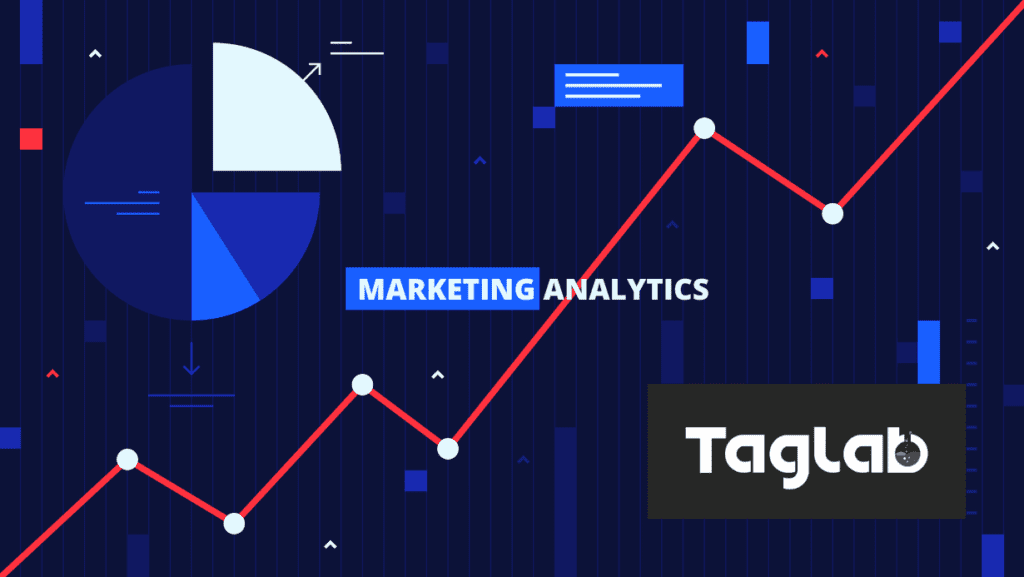Your cart is currently empty!
Why Analytics Is The Future of Marketing?

Introduction to Marketing Analytics
Marketing analytics is the process of measuring, managing and analyzing data from online traffic and advertising campaigns to improve marketing performance. It helps to identify trends, patterns and insights in the data, which can be used to optimize marketing efforts and make better business decisions.
With the vast amount of data available to businesses, analytics has become essential for making informed decisions and improving marketing performance. With the help of this, businesses can track the performance of their marketing campaigns, identify areas for improvement, and make data-driven decisions to optimize their marketing strategies.
Understanding Marketing Analytics
There are various types of marketing analytics, including descriptive, diagnostic, predictive, and prescriptive analytics.
Descriptive analytics involves summarizing and describing the data, diagnostic analytics includes identifying the cause of a particular problem, predictive analytics comprises of forecasting future performance and trends, and prescriptive analytics encompasses suggesting actions to take based on the data.
There are various tools and technologies used in marketing analytics, including web analytics, social media analytics, marketing automation software, and data visualization tools. These tools can help businesses collect, organize, and analyze data, providing insights to inform marketing decisions and strategies.

The Impact of Analytics on Marketing
Improved decision-making:
Analytics can provide businesses with valuable insights, which in turn can help them make better-informed decisions. By identifying patterns and trends in the data, businesses can optimize their marketing strategies and target the right audience.
Increased efficiency and cost savings:
By using analytics, businesses can identify areas of inefficiency and target areas where they can reduce costs. They can also optimize their campaigns to better target the right audience, which can lead to increased efficiency and cost savings.
Enhanced customer insights:
Analytics can provide businesses with a deeper understanding of their customers, including their behavior, preferences and demographics. This can help businesses to create more personalized and effective marketing campaigns.
The Role of Analytics in the Future of Marketing
First Party Data Integration in Marketing Operations Management:
Accelerated by third-party cookies ban by most of the browsers, companies now need to rely more on first-party data such as data collected by web analytics tools. Such information contain a variety of parameters and attributes that can be used beyond the reporting ecosystem of web analytics and data visualization dashboards; It can scale up to integrate in digital marketing operations execution such as content personalization, digital advertising, customer segmentation, and dynamic retargeting.
Predictive analytics and its impact:
Predictive analytics uses data, statistical algorithms, and machine learning techniques to identify the likelihood of future outcomes based on historical data. This can help businesses to anticipate future market trends and make more accurate predictions about customer behavior, which can inform marketing strategies.
Machine learning and its impact on marketing:
Machine learning is a subset of artificial intelligence that uses algorithms to learn from data and make predictions or decisions without being explicitly programmed. It can improve marketing automation, personalization, and customer targeting, and can also help to optimize ad spend and improve ROI.
The future of analytics in marketing:
The future will involve an increasing use of artificial intelligence and machine learning to analyze data and make predictions. The ability to analyze larger and more complex data sets will also become more prevalent. And real-time analytics will become more important for businesses to make quick decisions.
Conclusion
Businesses should consider implementing analytics in their marketing strategy to gain valuable insights and make data-driven decisions while insuring that their data collection and measurement plans are scalable, efficient, accurate, and compliant. Contact us for a free advice on how to draft a solid strategy for your analytics and marketing business requirements.
FAQs: Introduction to Marketing Analytics
What is marketing analytics and why is it important?
Marketing analytics involves measuring, managing, and analyzing data from online traffic and advertising campaigns to improve marketing performance. It helps businesses identify trends, patterns, and insights in the data to optimize their marketing efforts and make better business decisions.
What types of analytics are used in marketing?
Analysis and analytics practices for marketing and growth hacking includes descriptive, diagnostic, predictive, and prescriptive analytics. Descriptive analytics summarizes and describes the data, diagnostic analytics identifies the cause of a problem, predictive analytics forecasts future performance, and prescriptive analytics suggests actions to take based on the data.
How do businesses use analytics for marketing?
Businesses use analytics to track the performance of their marketing campaigns, identify areas for improvement, and make data-driven decisions to optimize their marketing strategies. It helps them target the right audience, increase efficiency, and enhance customer insights.
What are some tools and technologies used in marketing analytics?
Analytics practice for marketing relies on various tools and technologies such as web analytics, social media analytics, marketing automation software, and data visualization tools. These tools help businesses collect, organize, and analyze data to gain valuable insights for their marketing decisions and strategies.
What is the future of marketing and analytics?
The future is unpredictable, but apparently it will involve increased use of artificial intelligence and machine learning to analyze data and make predictions. Real-time analytics will become more important, and businesses will focus on integrating first-party data into their marketing operations to comply with changing privacy regulations and improve targeting.



